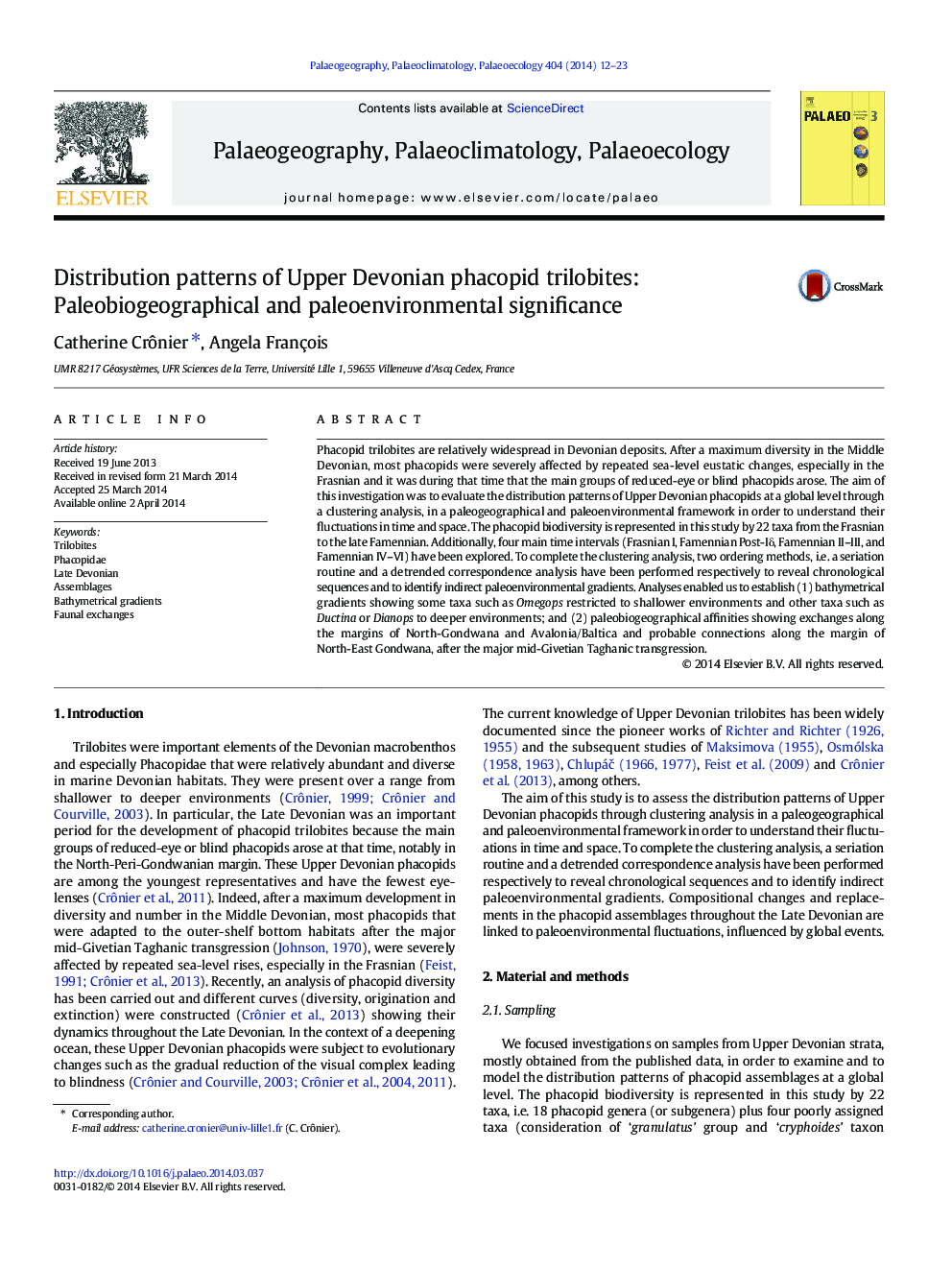| Article ID | Journal | Published Year | Pages | File Type |
|---|---|---|---|---|
| 6350132 | Palaeogeography, Palaeoclimatology, Palaeoecology | 2014 | 12 Pages |
Abstract
Phacopid trilobites are relatively widespread in Devonian deposits. After a maximum diversity in the Middle Devonian, most phacopids were severely affected by repeated sea-level eustatic changes, especially in the Frasnian and it was during that time that the main groups of reduced-eye or blind phacopids arose. The aim of this investigation was to evaluate the distribution patterns of Upper Devonian phacopids at a global level through a clustering analysis, in a paleogeographical and paleoenvironmental framework in order to understand their fluctuations in time and space. The phacopid biodiversity is represented in this study by 22 taxa from the Frasnian to the late Famennian. Additionally, four main time intervals (Frasnian I, Famennian Post-Iδ, Famennian II-III, and Famennian IV-VI) have been explored. To complete the clustering analysis, two ordering methods, i.e. a seriation routine and a detrended correspondence analysis have been performed respectively to reveal chronological sequences and to identify indirect paleoenvironmental gradients. Analyses enabled us to establish (1) bathymetrical gradients showing some taxa such as Omegops restricted to shallower environments and other taxa such as Ductina or Dianops to deeper environments; and (2) paleobiogeographical affinities showing exchanges along the margins of North-Gondwana and Avalonia/Baltica and probable connections along the margin of North-East Gondwana, after the major mid-Givetian Taghanic transgression.
Keywords
Related Topics
Physical Sciences and Engineering
Earth and Planetary Sciences
Earth-Surface Processes
Authors
Catherine Crônier, Angela François,
